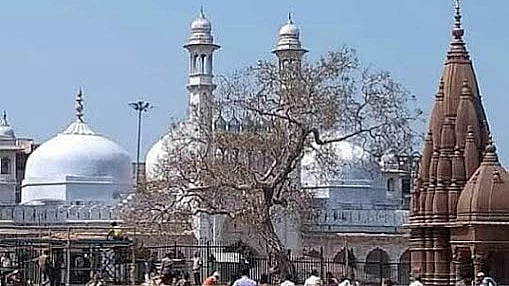Now it is the Gyanvapi mosque. Before the mosque built by the Mughal invader Aurangzeb in 1669 over a Shiva temple goes the Ramjanambhoomi way, the onus is on men and women of goodwill in the two communities to amicably settle the dispute. This is the lesson that the protracted but successful Ramjanambhoomi campaign holds for the leaders of the two communities. For the sake of amity between Hindus and Muslims, another bruising conflict must be nipped in the bud. Muslims need to appreciate that even the very name Gyanvapi is alien for a mosque. If there was a lack of historical evidence that the mosque was indeed built over the partial ruins of the Kashi Vishwanath temple, the recent findings of the court-ordered survey by the Archaeological Survey of India have duly furnished that proof. Actually, any lay person visiting the disputed site in Varanasi cannot but notice traditional symbols of Hindu temples. According to the ASI report, 55 Hindu deity sculptures were found inside the Gyanvapi mosque. These include 15 Shiv Lingas, three sculptures of Vishnu, three of Ganesha, two of Nandi, two of Krishna, and five of Hanuman. The copies of the ASI reports were made available to both the sides on the directions of the court. Predictably, the Gyanvapi management committee has disputed the findings of the ASI, suggesting it was an attempt to set a false narrative. They couldn’t have said anything different, given that they have no intention of seeking a mutually agreed end to this festering dispute. We can leave aside the question whether or not the Gyanvapi dispute should have been raked up at this juncture. Off and on the matter has been agitated in lower courts for several years. When governments behave ostrich-like, seeking to push potentially explosive issues on the backburner in the hope that the problem will go away with the passage of time, circumstances so conspire as to confront them frontally with the same-very problem. The Ayodhya dispute was simmering for long, but came to a head in 1949 when an idol of Ram Lalla was found under the central dome of the disputed structure. A woolly-headed government ordered the district administration to remove the idol. It did not. And the idol stayed inside all through. Had the then rulers in Lucknow and New Delhi shown despatch and foresight, the dispute could not have blown into a huge headache for successive Congress governments. Soon after Independence, the Muslim side would have taken a far more conciliatory attitude than it did years later, its obstreperousness fuelled further by the need of the Congress to poll en-bloc the Muslim vote. The point is simple. Procrastination in such matters is unhelpful, indeed, harmful in finding a reasoned solution.
Having said that, it is time the Narendra Modi government steps in to resolve the dispute before it erupts in full fury on the streets, the way the Ramjanambhoomi dispute had earlier. The government should seek out men of goodwill among the two communities and entrust them the task of finding an amicable solution through dialogue with the leaders of both Hindus and Muslims. Given that both Modi and the RSS chief Mohan Bhagwat in their address after the consecration ceremony in Ayodhya had laid stress on communal harmony, they should follow it up with taking the initiative to resolve the Gyanvapi dispute. The spirit behind Modi’s welcome claim that Ram was not “a problem but a solution”, that “he belongs to everyone” ought to inform the search for a reasoned end to the festering Gyanvapi dispute. It is notable that the Supreme Court upheld the Allahabad High Court order rejecting the challenge by the mosque authorities against the maintainability of the title suits under the Places of Worship Act of 1991. The Act did not bar Hindus from filing land title suits, be it Gyanvapi in Varanasi or Shahi Idgah at Mathura. It is easy to conclude that the Gyanvapi dispute now, and Shahi Idgah dispute later, are headed for a frontal confrontation between the two communities. Wisdom lies in defusing these potential threats to communal harmony as early as possible. Ultimately, the onus lies with the central government to defuse these potential powder kegs. What is needed is statesmanship by the incumbent regimes in New Delhi and Lucknow. The Modi-Yogi team can do it if they put their heads together.
